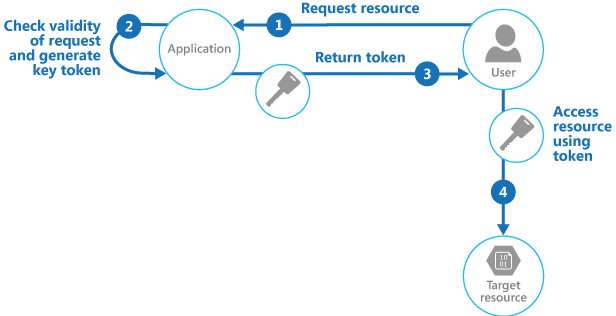A Gatekeeper style proxy which can delegate endpoints and get request from different levels of the platform i.e. a download request may go straight to the data store whereas a calculation may go straight to the API
Client programs and web browsers often need to read and write files or data streams to and from an application’s storage. Typically, the application will handle the movement of the data—either by fetching it from storage and streaming it to the client, or by reading the uploaded stream from the client and storing it in the data store. However, this approach absorbs valuable resources such as compute, memory, and bandwidth.
Data stores have the capability to handle upload and download of data directly, without requiring the application to perform any processing to move this data, but this typically requires the client to have access to the security credentials for the store. While this can be a useful technique to minimize data transfer costs and the requirement to scale out the application, and to maximize performance, it means that the application is no longer able to manage the security of the data. Once the client has a connection to the data store for direct access, the application cannot act as the gatekeeper. It is no longer in control of the process and cannot prevent subsequent uploads or downloads from the data store.
This is not a realistic approach in modern distributed systems that may need to serve untrusted clients. Instead, applications must be able to securely control access to data in a granular way, but still reduce the load on the server by setting up this connection and then allowing the client to communicate directly with the data store to perform the required read or write operations.
To resolve the problem of controlling access to a data store where the store itself cannot manage authentication and authorization of clients, one typical solution is to restrict access to the data store’s public connection and provide the client with a key or token that the data store itself can validate.
This key or token is usually referred to as a valet key. It provides time-limited access to specific resources and allows only predefined operations such as reading and writing to storage or queues, or uploading and downloading in a web browser. Applications can create and issue valet keys to client devices and web browsers quickly and easily, allowing clients to perform the required operations without requiring the application to directly handle the data transfer. This removes the processing overhead, and the consequent impact on performance and scalability, from the application and the server.
The client uses this token to access a specific resource in the data store for only a specific period, and with specific restrictions on access permissions, as shown in Figure 1. After the specified period, the key becomes invalid and will not allow subsequent access to the resource.

Overview of the pattern
It is also possible to configure a key that has other dependencies, such as the scope of the location of the data. For example, depending on the data store capabilities, the key may specify a complete table in a data store, or only specific rows in a table. In cloud storage systems the key may specify a container, or just a specific item within a container.
The key can also be invalidated by the application. This is a useful approach if the client notifies the server that the data transfer operation is complete. The server can then invalidate that key to prevent its use for any subsequent access to the data store.
Using this pattern can simplify managing access to resources because there is no requirement to create and authenticate a user, grant permissions, and then remove the user again. It also makes it easy to constrain the location, the permission, and the validity period—all by simply generating a suitable key at runtime. The important factors are to limit the validity period, and especially the location of the resource, as tightly as possible so that the recipient can use it for only the intended purpose.
This pattern is ideally suited for the following situations:
This pattern might not be suitable in the following situations: